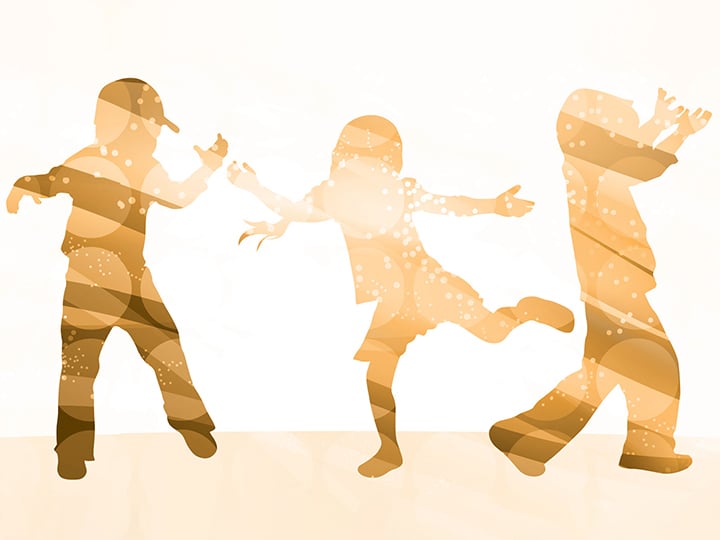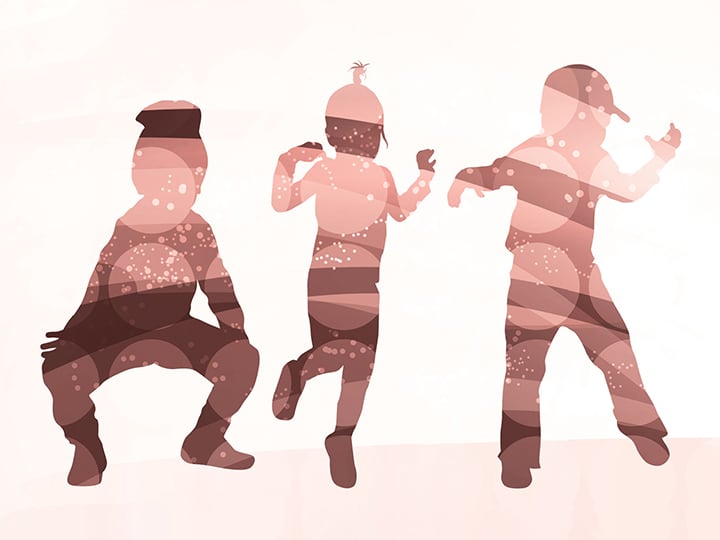Skip to
A B C D E F G H I J K L M N O P Q R S T U V W X Y Z
A
a cappella music for voices only, without accompaniment
accent stress or emphasise a note
accidental any musical symbol that alters the pitch of a note, eg. a sharp, flat or natural
accompaniment the music that supports the main melody
arpeggio a chord where the notes are played in succession rather than at the same time
B
bar a rhythmic grouping consisting of the number and type of beats indicated by the time signature. Notated with vertical lines on the staff
beat the regular basic unit of length in musical time
blue note a particular kind of chromatic note which is characteristic of blues and jazz music (as seen in This little light of mine)
body percussion using claps, stamps, slaps and tongue clicks etc. to create rhythmic patterns and sounds
C
call and echo a question and answer pattern in which a solo voice sings a phrase, and then a group of voices copies this phrase exactly
call and response a question and answer pattern in which a solo voice sings a phrase, and then a group of voices responds by singing something different
canon two or more parts overlapping in exact imitation (as seen in London’s burning)
chant rhythmic speech
chord two or more notes played at the same time
chromatic note a note that is outside of the key (as seen in Mexican counting song)
D
D.C. al fine return to the beginning and finish at ‘Fine’ (Italian - ‘end’)
Da Capo (D.C.) (Italian – ‘to the head’) return to the beginning
dotted note where a dot is placed immediately after a note, indicating that the note’s rhythmic value is increased by half
dotted rhythms where a dotted note precedes or is followed by a shorter note, creating a characteristic ‘tum-ti-tum-ti’ rhythm (as seen in Dr Knickerbocker ek, dho, teen!)
downbeat the accented first beat of the bar
drone a long sustained note or chord
dynamics the loudness or softness of the music
F
flat a musical symbol that indicates lowering the pitch of a note by a semitone
G
glissando a rapid slide swooping up or down (plural = glissandi)
I
interval the pitch distance between two notes
intonation the accurate pitching of musical notes (good intonation = being ‘in tune’)
K
key a tonal centre, based on one of the 24 major or minor scales. Some examples are C major or D minor
key change a change from one tonal centre to another
key signature sharps or flats, placed at the beginning of each system, to indicate the key of a piece of music
L
legato smooth melodic line
M
major key a tonal centre based on one of the 12 major scales
major scale an eight note scale with a characteristically joyful sound
melody a series of notes creating a distinctive and memorable sequence (often referred to as ‘the tune’)
minor key a tonal centre based on one of the 12 minor scales
minor scale an eight note scale with a characteristically melancholy sound
N
natural a musical symbol that cancels out any other accidental, indicating that the pitch of a note is neither sharp nor flat
O
ostinato a repeated rhythmic or melodic pattern
P
pedal note a note which is sustained against changing chords (as seen in The animal fair)
pentatonic scale a five note scale
percussion instruments that create sound by being struck, scraped or rattled
pitch how high or low a musical note is
pulse the regular beat of a piece of music
R
range the interval between the lowest and highest notes of a piece of music
round another name for a canon
S
scale a series of notes in ascending or descending order
scat non-verbal vocal improvisation, eg. ‘doo-be-doo’ etc. Often associated with jazz music (as seen in Sunshine in my heart or I wanna sing scat)
Scottish snap (or ‘scotch snap’) a kind of dotted rhythm where the short note comes first, followed by the longer dotted note. (As seen in Roll the old chariot along)
semitone the smallest interval in Western music, eg. between E and F, or A natural and A sharp
sequence where a melody is stated and then repeated at increasing or decreasing pitches (as seen in In the autumn)
sforzando a note or chord which is strongly accented, then fades away quickly
sharp a musical symbol that indicates raising the pitch of a note by a semitone
slur where a series of notes is played in succession, without separation. With singing, a slur is used when one syllable is sung to more than one note
staccato short, detached notes, indicated with a dot underneath or above the note head
staff (plural - staves) the five horizontal lines, divided vertically into bars, on which music is notated
syncopation where rhythms fall just before or after the strong beat, creating a dance-like feel (as seen in Switching it on and Life is what you make it)
system multiple staves that are bracketed together, indicating that they are meant to be played at the same time
T
tacet where the accompaniment stops playing for a prolonged period of time
tempo the speed of the music
time signature numbers on the staff, located at the start of a piece, that show the number and type of beats in each bar
triplets a group of three notes having the time value of two notes of the same kind (as seen in Wreck of the Sloop John B.)
tune a series of notes creating a distinctive and memorable sequence (also known as a ‘melody’)
U
unison where a group of voices are all singing together at the same pitch
upbeat a weak beat preceding a strong downbeat (as seen in the first beat of A Keelie)
V
vocal percussion using the voice to imitate the sound of percussion instruments


